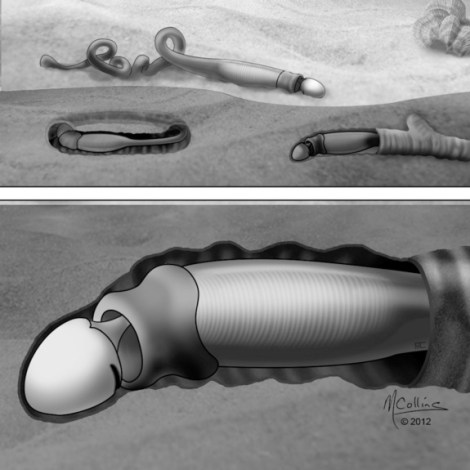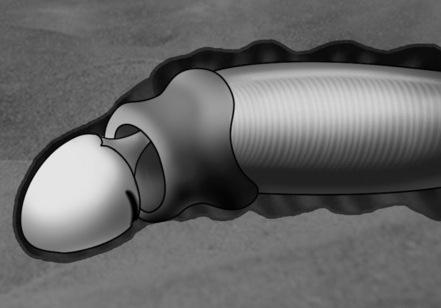
Pictured above is the missing link between lungfish and dildos. No wait, between the Hitachi magic wand and this thing. NO. It is the missing link between two types of sea creatures, pterobranches and acorn worms. Which means it’s not a fossilized dong; it’s a significant paleontological discovery. That happens to LOOK like a fossilized dong.
Pterobranches stay in one place, living inside stationary clusters of tubes on the seafloor. Acorn worms are mobile. So how are they linked? This newly-analyzed worm, called Spartobranchus tenuis, seems to have features of both types — they’re wang-shaped, like a modern acorn worm, but about a quarter of the 9,000 fossils that scientists looked at were found with tube structures similar to the pterobranch tubes.
We are sharing this with you to alert you to the ever-unfolding beauty of the fossil record, the wonder of evolution, and the possible significance of this creature in your own evolutionary history:
The discovery also pulls back the curtain on the origin of the chordates, a group of animals with spinal cords that includes vertebrates such as humans, [researcher Jean-Bernard] Caron said. Hemichordates, chordates and echinoderms like starfish and urchins all had a common ancestor with gill slits, Caron said.
“We think it’s possible that the common ancestor for all three groups was wormlike,” Caron said.
But mostly because it looks like a weenie. Ha!



